I’ll get this disclaimer out of the way right up front: This post is written primarily for the serious, advanced photographers that enjoy this site. If you’re comfortable with a compact point & shoot camera, or satisfied with the results from the camera built into your smartphone, you can scroll down to the appropriate section near the end of this post now.
I can’t believe I’m actually writing this post. God knows I come across so many blog posts and YouTube videos online under the title “What’s In My Bag” that I don’t even bother slowing down my scrolling anymore. But in keeping with the Roadcraft USA philosophy I am compelled to address the topic…not to boast about all the expensive gear I’ve accumulated, but to offer real world guidance on what you really need in a complete lightweight and compact, professional-level, photographic travel kit.
Gone are the days when I was photographing 75 weddings, 100 portrait sessions and dozens of professional motorsports events per year. Back in the day I carried three full sized flagship Nikon DSLR camera bodies, a compliment of eight fast prime and zoom Nikkor lenses, 4 Nikon SB-5000 speedlights and all of the ancillary equipment that a professional needed to undertake almost any assignment. Having now adopted a “semi-retired” station in life as a photographer, my equipment requirements have trended towards a semblance of minimalism. Make no mistake: I still demand the utmost in performance from my imaging equipment, and the gear I carry is truly state-of-the-art, I just don’t need as much “stuff” as I required in the past.
About Emerging Technologies
I’ve always been one to adopt emerging technologies early on. I was one of the first professional wedding and portrait photographers to transition from film to digital with the introduction of the Nikon D1X DSLR camera in 2001…an absolute dinosaur of a camera by today’s standards. I was able to trade in my film cameras for top dollar while most of my colleagues feared, and were reluctant to implement, electronic imaging in their workflows. Two years later they were forced, by the necessity of remaining competitive, into the digital domain. Their trusty old, wildly expensive, Hasselblad film cameras became worthless, and were relegated into retirement as luxury paperweights, having no trade-in value whatsoever.
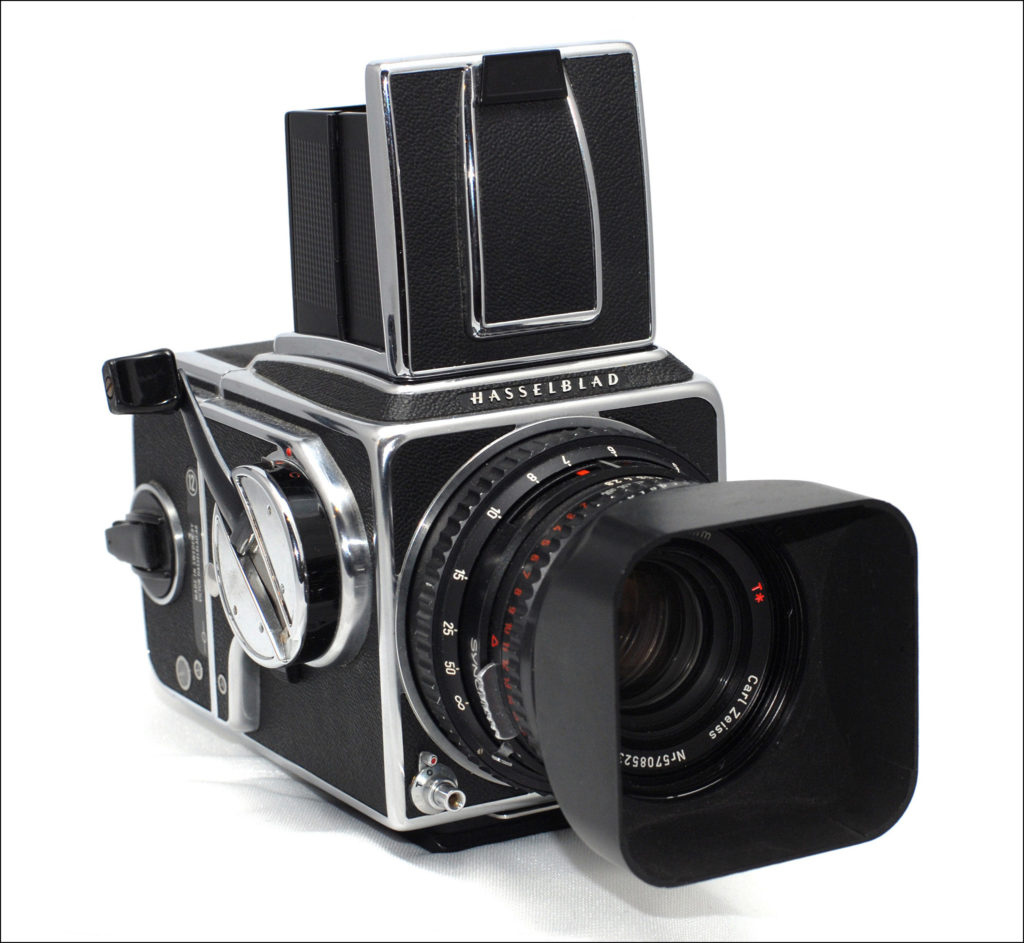
In 2014 I was one of the first professional photographers to transition from DSLR camera bodies to mirrorless offerings. Same scenario, different era. I got top dollar for my aging DSLR cameras. Today the world’s top camera manufacturers are moving, all but exclusively, into a mirrorless world; and those DSLRs are going the way of the Dodo, too.
Photography And Two-Wheeled Travel
Size and weight are of primary concern when your cameras are used almost exclusively for travel; especially when one travels via two-wheeled conveyances. There simply is not very much storage space on your average motorcycle and a lot of it has already been earmarked for other necessities. (A subject for another entire post completely). On my current bike, a BMW F800GT sport-touring bike, I have a small 27 liter top case which is devoted solely to my imaging equipment. By configuring a Neewer flexible partition case to its interior, I have somehow managed to pack an impressive amount of gear therein. The case is mounted on the luggage rack at the back of the bike and has the necessary feature of being super convenient to access immediately when a photo opportunity arises. This compact compartment manages to swallow the following gear, which travels with me on every lengthy adventure:
1 Nikon Z7 Mirrorless Camera Body
1 Nikon Z6II Mirrorless Camera Body
1 Nikon WR-R11a Wireless Remote Control
1 DJI Mavic Air 2 Quadcopter (Drone)
2 Additional Batteries and 2 Battery Chargers For The Nikon Cameras
2 Additional Batteries For The DJI Drone
1 Filter Pouch With Filters And Stepping Rings For The Nikkor Lenses
Spare Propellers For The Drone
Neutral Density Filter Kit For The Drone
Spare Memory Cards For The Nikon Cameras And The Drone
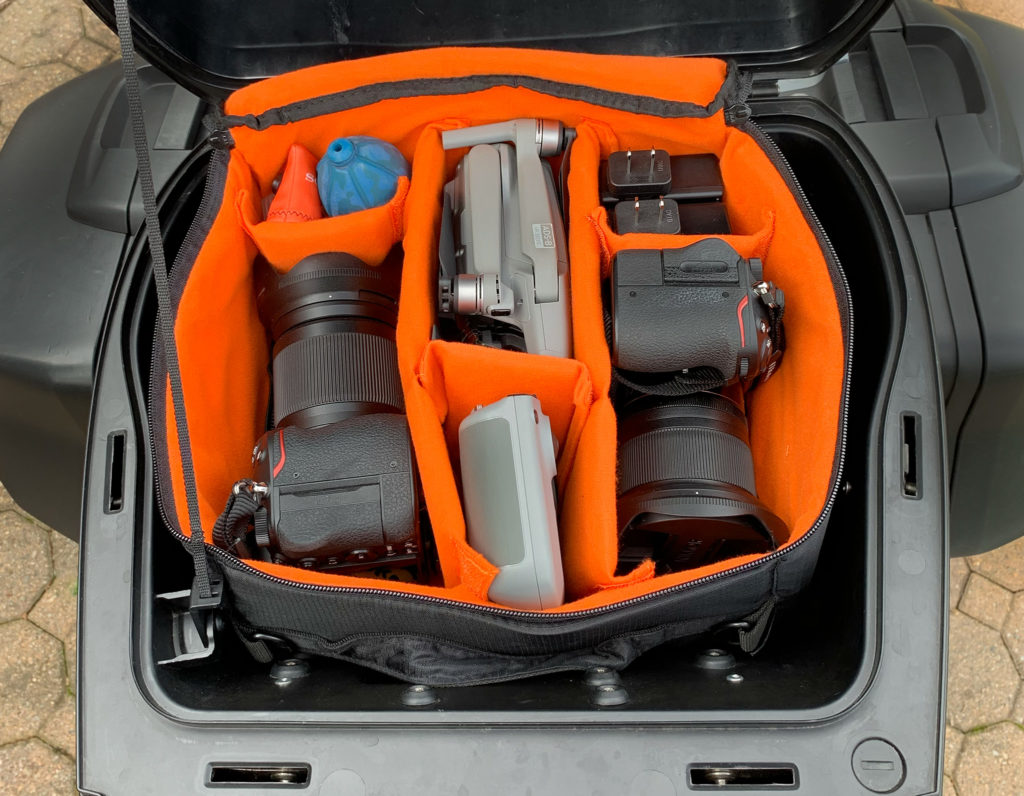
The only other photographic necessities that are packed elsewhere on the bike are the charging components for the drone batteries, my camera sensor cleaning kit and a travel tripod. The tripod is handily attached to the exterior of my waterproof personal gear bag, while the other items mentioned are stored inside that bag; as I only need to utilize them when I unpack and recharge at the end of a long day of riding and shooting.
The Choices We Make
Some condescending photographers might question my choice of ‘inexpensive’ lenses. For example the 14-30MM f4 wide angle zoom lens retails for around $1,300, while its faster counterpart, the 14-24MM f2.8 comes in at around $1,800. I gladly gave up that single f stop of light…not so much to save $500, but to save on physical size and weight. The difference between the long zoom lenses are enormous. The 24-200MM f4-6.3 retails for about $900. I affectionately call this lens “The Streetsweeper” for its ability to cover almost every imaginable scene. The far less versatile 70-200MM f 2.8 comes in at a whopping $2,700, is much larger in size and its weight is two and a half times greater. Is it a better lens? Probably…especially when used at maximum aperture. I would challenge anyone to tell the difference when both lenses are set to f8, however; an aperture I routinely use in my travel photography. If I need the extra light I’ll simply dial in a slower shutter speed and mount the camera on a tripod. I don’t need the lower light performance that the 70-200 offers, I didn’t need to spend an extra $1,700 and I sure can’t live with the extra size and weight when I’m traveling by motorcycle. In the past, as a full time working professional, I had the “better” lenses, but I simply don’t need them for the kind of work I produce these days.
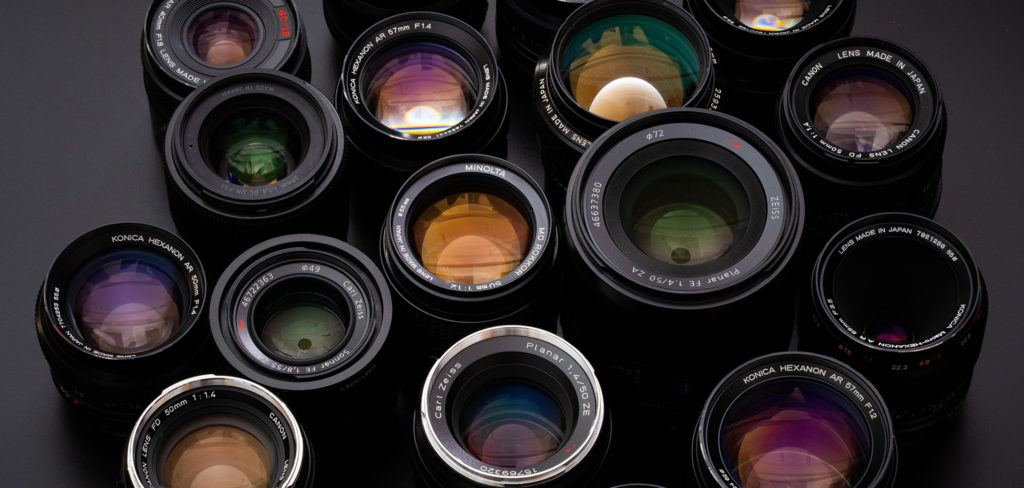
I mentioned the word tripod a couple of times now and am compelled to tell you about the one I carry. It is the absolute bomb! I carry the Peak Design Travel Tripod. Yes, it’s a bit pricy at $375, but it is an engineering marvel…the best compact travel tripod made by anyone, anywhere. Period. It can be deployed in about 10 seconds and supports up to 20 pounds of load, including a hook from which can suspend your gear bag above wet ground. It folds up to just over 15” in length and weighs just 3.4 pounds! Four years of engineering reportedly went into its design and it shows. Nothing on the market from any manufacturer even comes close! They also make a carbon fiber version that weighs 2.8 pounds but it is priced at $650!!! The incredibly compact design of this tripod is revolutionary for photographers who travel by motorcycle.
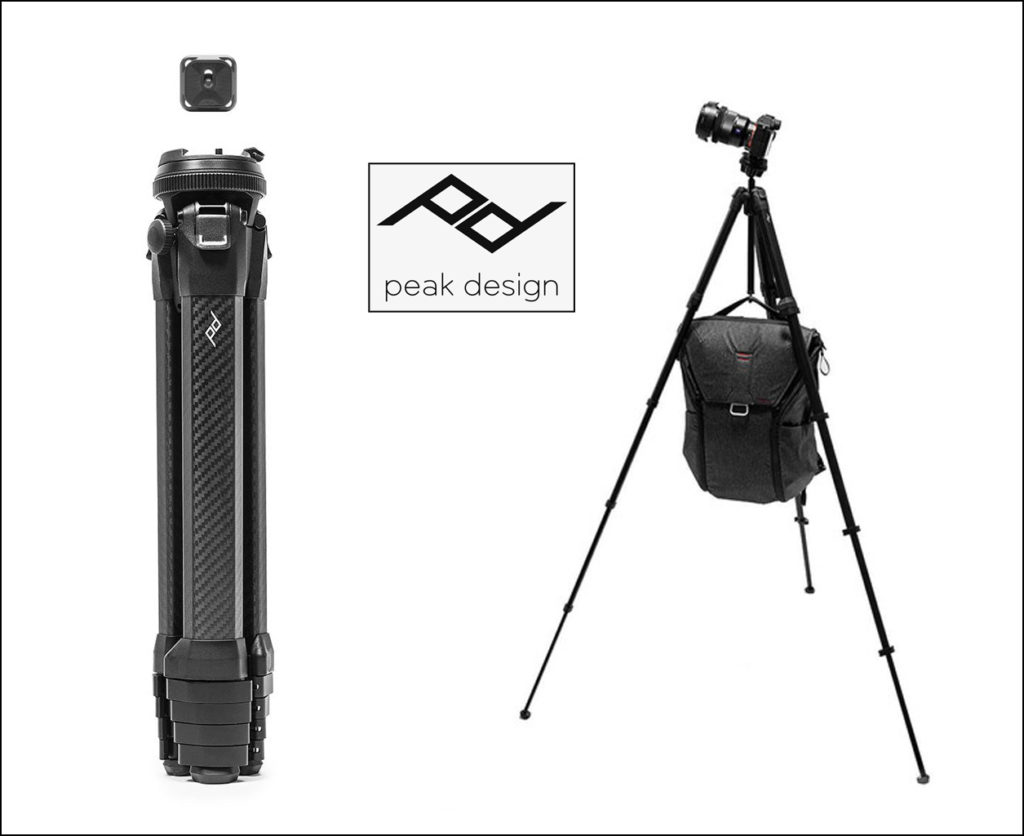
In the past I carried multiple, identical, camera bodies in my kit. It was convenient knowing that every camera had the same controls in the same place; thereby readily becoming an extension of one’s hands. Today’s offerings have different individual strengths and weaknesses; and while the lenses, adapters and accessories are fully interchangeable, I will choose different camera bodies for different conditions. The Z7 has a very high resolution (45.7 megapixel) imaging sensor; making it the camera of choice when I know my finished image is going to be printed in a large display format. Conversely, the Z6 II “only” has a 24.5 megapixel image sensor (For reference, my first Nikon DSLR flagship camera, the D1X, had a mere 5.47 megapixel image sensor). With its lower resolution sensor, however, the Z6 II delivers better performance in low light situations, better dynamic range and a higher continuous shooting frame rate. It naturally became my choice for motorsports photography where photographing cars and motorcycles traveling at 200 MPH is a routine scenario. It has earned the spot as my favored camera when shooting under less-than-ideal lighting conditions. Nikon recently released their new flagship model, the Z9, which combines, and exceeds, the performance of both my cameras together…high resolution, great low light performance and a staggering continuous shooting rate of up to120 frame per second!!! If I were still working full time as a professional photographer I would surely have two of them in my kit, but they are just too big, physically, for the manner in which I travel. No worries. I’m certain that something better, and more suitable to my needs, is on the drawing board at Nikon already. Which brings me to the next thought.
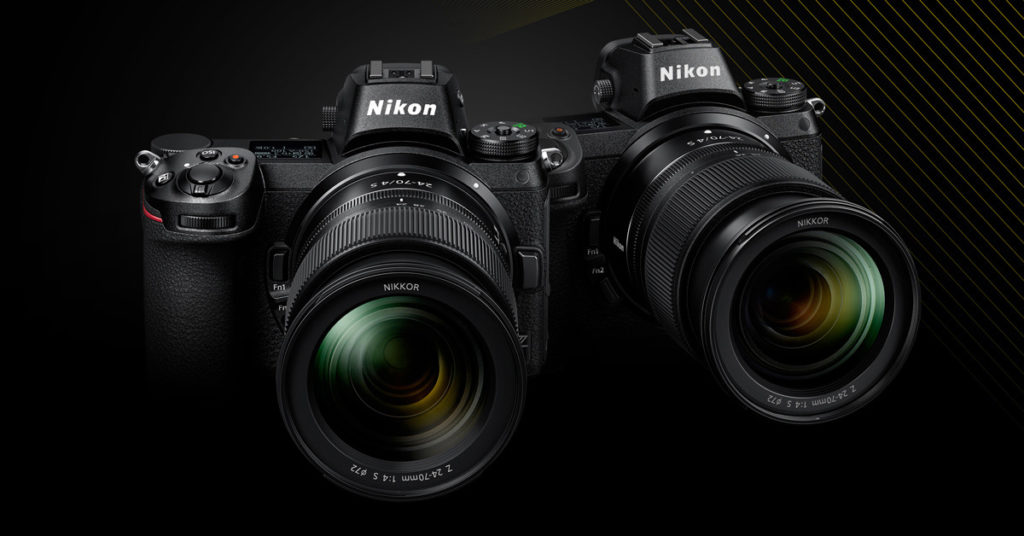
What Does The Future Hold?
This is the kind of post that may not age well. I’ve already stated that the gear I carry is “state-of-the art”, but that is a definition that changes at alarmingly fast intervals in this digital age. It seems like every year the world’s top camera manufacturers release new, more advanced and capable cameras; which essentially render the previous year’s models obsolete. While they are still extraordinary imaging devices, by any measure, they ‘age’ (and thus depreciate in value) very quickly. Gone are the glory days of film cameras, when well-crafted Hasselblad medium format cameras could last decades when properly maintained.
A Different Point Of View
In addition to my conventional cameras I also carry a drone in my travels. These unmanned aircraft systems are also evolving at an incredible pace. My DJI Mavic Air 2 has higher imaging resolution than my Nikon Z7 camera, folds up to where it easily fits in the palm of my hand, and retails for under $800!!!
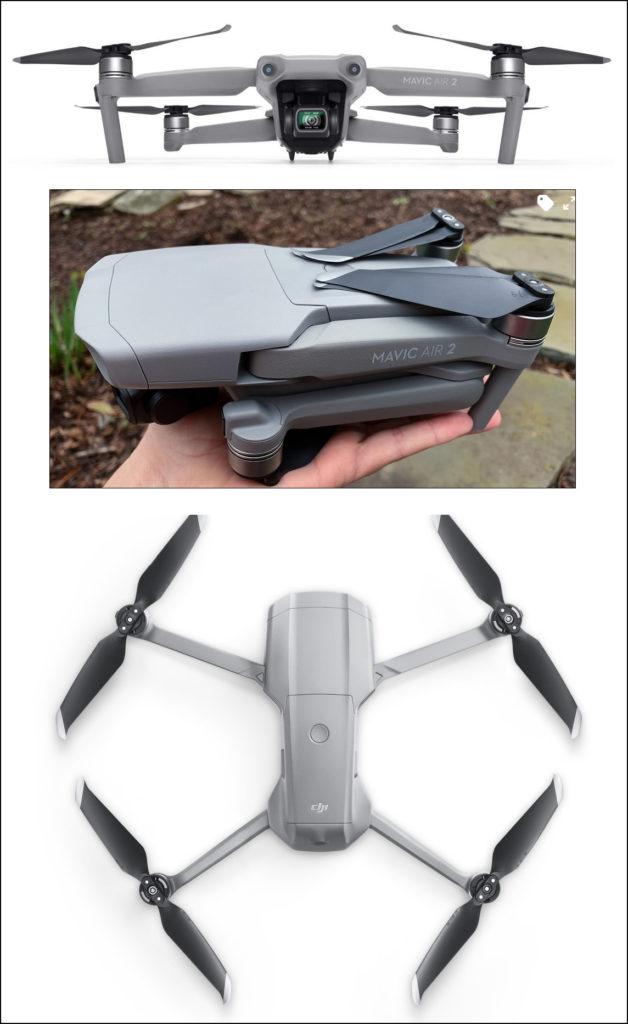
The drone has added an entirely new dimension to my photography, allowing me to create “birds eye” view images and video that would have required an airplane or helicopter ride just a few short years ago. There are legal requirements governing who can fly a drone, what size aircraft, and whether it is being used commercially or for personal recreational use. I have become an FAA licensed Part 107 UAS remote pilot, which required quite a bit of specialized education prior to taking an exhaustive licensing exam. In the licensing process you will learn the specifics of where you can fly; not just safely but legally. One point that American travelers should know is that it is illegal to fly a drone within the confines of any US National Park.
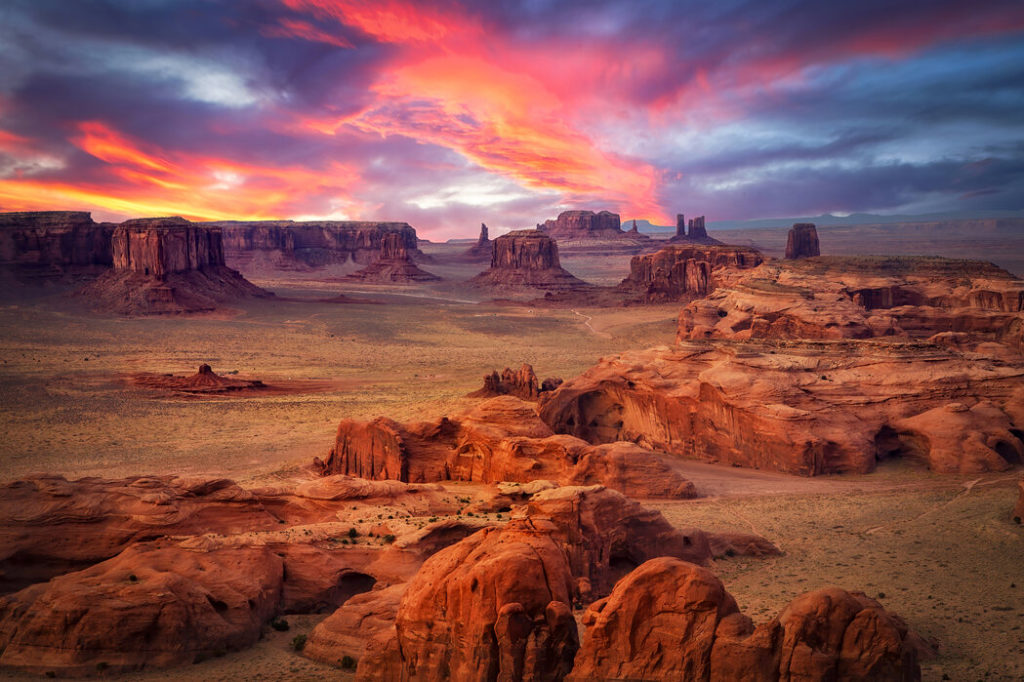
A birds-eye view of Hunts Mesa in Monument Valley, Arizona captured with a drone
What About Smartphone Cameras?

What about them? They, too, are getting better and better with every new release from the manufacturers. The current iPhone offering (iPhone 13) boasts an impressive 12 megapixel imaging sensor, a 3X optical zoom lens with maximum aperture of f1.5, up to 1 TB of internal storage and extraordinary battery life. The AI-inspired software in the camera allows the user to create “professional-type” creative effects, as well as supplying some fairly remarkable photo and video editing capabilities. Are they a worthy replacement for a dedicated professional camera system? No. They still have a long way to go to reach that benchmark, but under the right conditions they can deliver amazing images. I love the fact that my iPhone is always in my pocket; ready to capture images in seconds. Many of the photographs you see here on this site, or on the pages of my social media, are quick captures made with my iPhone. Truth be told this image of my motorcycle in the Tennessee Foothills of The Great Smoky Mountains, was used by BMW Motorcycle Owners of America for their 2020 Anonymous book cover. I captured this scene with my iPhone XR!
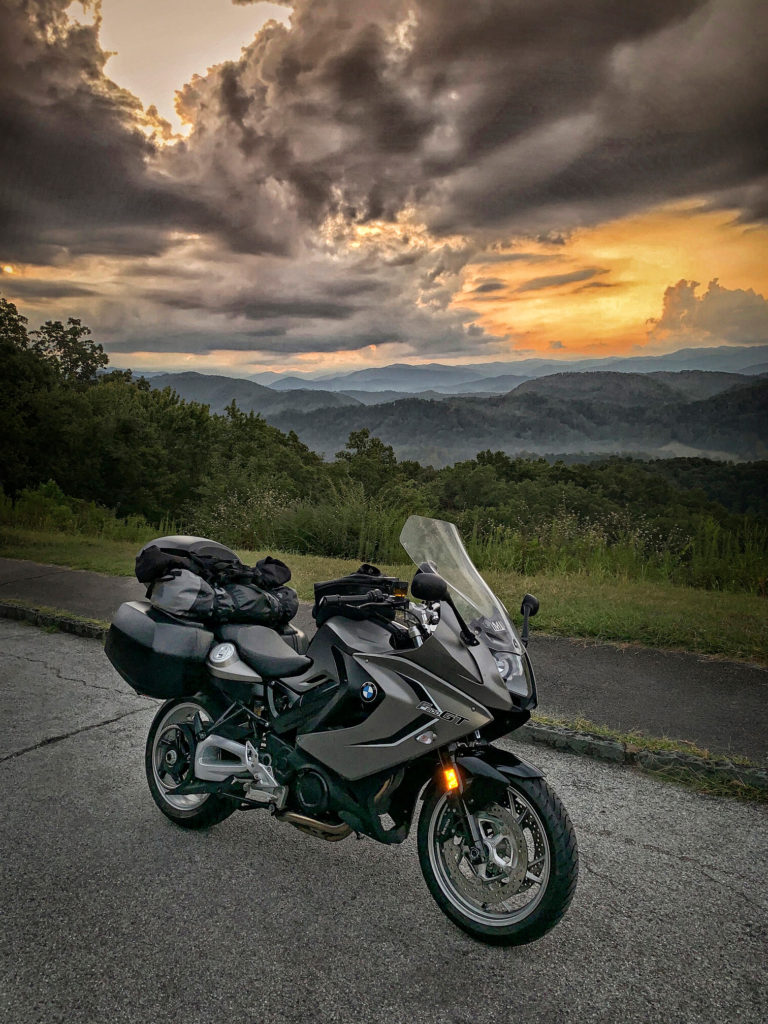
The Bottom Line
Regardless of your choice of imaging equipment, understand and accept the fact that it will become ‘obsolete’ in a year or two. The camera is just a tool and the real satisfaction comes not from owning it, but in using it. Using it to create something special…a captivating image of a beautiful scene or a lasting memory of a wonderful life experience. The best camera to have for any given photograph is the one you have with you when an extraordinary photographic opportunity unfolds before you. Convenience of use is paramount. If your gear is not readily deployable you may let opportunities pass by. Don’t be that person. Great moments can disappear as quickly as they present themselves. Get them down before they get away; and remember them fondly for years to come.
What’s in your camera bag? What tips do you have for traveling photographers? Join the discussion by leaving a comment below. Be sure to bookmark this site and subscribe to Roadcraft USA to be notified when future posts hit the blog.
Please help support the Roadcraft USA online resource by making product purchases through the links in this post. As Amazon Associates we earn commissions from qualifying purchases made through these links. There is no additional cost to you whatsoever. Thank you for your support!
Click Here to view an interactive visual index page where you can quickly browse through all of the great features that are published on the Roadcraft USA blog.

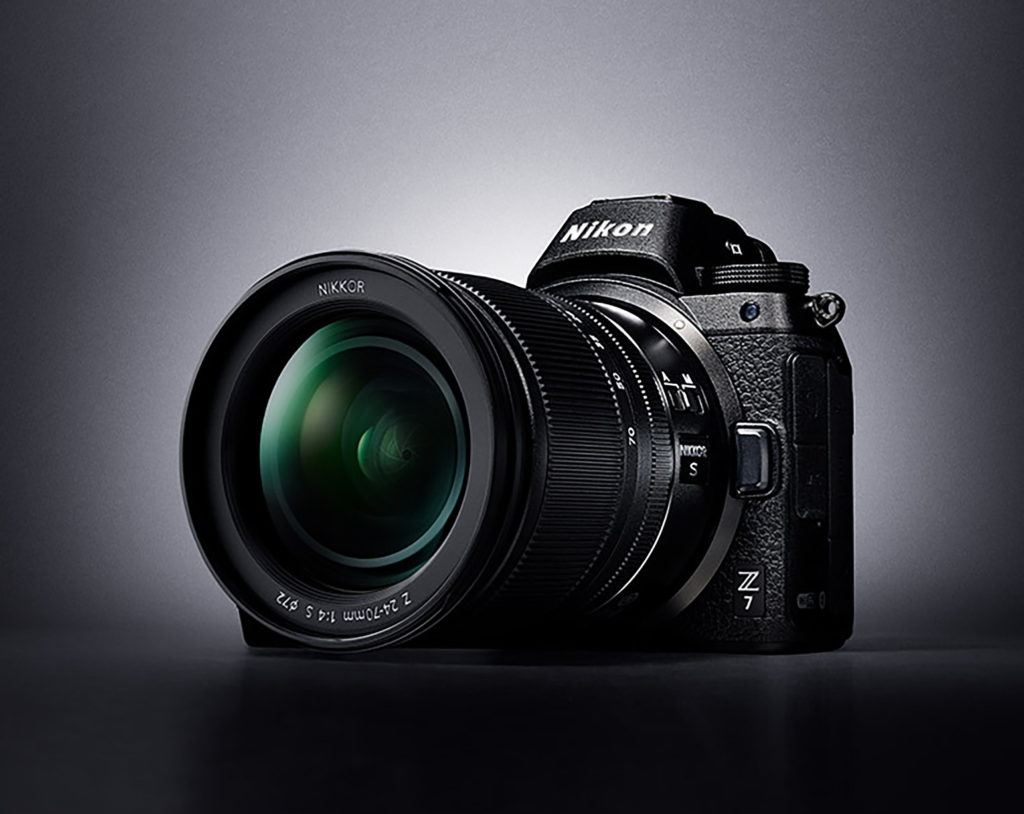
Pingback: maine acadia motorcycle travel - Roadcraft USA